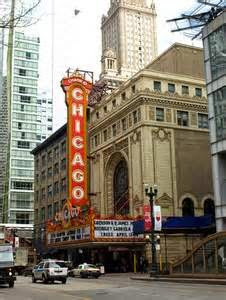 |
| Historic Chicago Theater - A Link To The Past |
Over the years as American cities renovate they have shown a tendency to do so with a heavy hand. Often after the architects and planners have their way little or none of the original structures remain standing. This confirms our status as a throwaway society where strong and growing government intervention, ADA requirements and ever-changing building codes add substantially to the cost of remodeling but add little or often detract from the utility value of the end product. Sadly, this tends to make buildings prematurely obsolete.
 |
| The Shambles In York England |
Here in America, a trend has begun to take hold where those who value our cultural ties to the past and history have started to move back into the grand old urban neighborhoods that have deteriorated over time. This process of renovating old and tired neighborhoods by introducing an influx of more affluent residents is referred to as gentrification. Some people see this as a controversial topic in politics and in urban planning but if gentrification can improve the material quality of a neighborhood and save many of the structures from the wreaking-ball the fact some residents and businesses might find they are forced to relocate because of rising rents is a small price to pay.
In a country where much of the new residential construction is built in the cookie-cutter urban sprawl variety, it is easy to understand why unique hand-built older homes are becoming more valued. In our modern era, a great deal of new building is driven by what is in the interest of big developers and not the buyer or society. Developers generally seek a clear canvas and cheap land on the edge of town on which to build. Builders garner savings from mass production factory-like building methods with sites that are in close proximity that reduces travel time for workers. They also love to transfer the cost of upgrading the infrastructure to access the new community to the government. All this skews the direction of growth as business rushes to locate near these new opportunities gutting areas developed only decades ago.
 |
| In the Beginning, Everything Is New |
As an economy matures its rhythm changes, this means the focus of society should transition into sustaining and maximizing what has been created by extending its use. With all this in mind, it is important to realize much can be learned about man and his history if we look at how these early cities developed and why. When you travel it is often possible to break down into several categories what you will be seeing, old cities, new cities, and natural wonders and beauty. America needs to adjust codes and policies to help preserve historic structures and allow them to be financially competitive. Thoughtful individuals that appreciate diversity are voting that they have seen enough of our cookie cutter cities that all look alike, with the same stores, restaurants, and shops. With that in mind, we should make sure we do not underestimate the lessons our older cities have to offer.
No comments:
Post a Comment